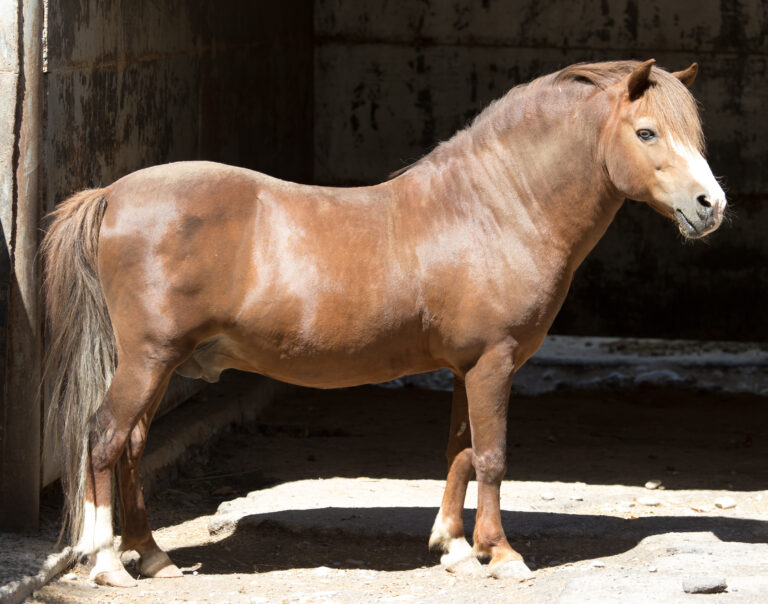
In this episode of the Disease Du Jour podcast, Joy Tomlinson, DVM, PhD, DACVIM (LAIM), joined us to discuss liver disease in horses, including EqPV-H and EqHV. She talked about clinical signs of liver disease, diagnostic strategies, treatment and management options, biosecurity considerations, and more.
This episode of Disease Du Jour is brought to you by Bimeda.
What Causes Liver Disease in Horses?
Tomlinson explained that there are many causes of liver disease in horses, including bacterial and viral infections and toxins in feed, supplements, hay, and weeds. “Additionally, there are a fair number that we don’t really know what’s causing the injury,” Tomlinson said. “We call it chronic active hepatitis.” She explained that horses can also develop liver cancer, but this is rare.
Two common viral infections in horses are equine hepacivirus (EqHV) and equine parvovirus (EqPV). Tomlinson said many horses become infected with these viruses, but very few develop significant disease. “That’s a very open question, and particularly my line of research right now is why some horses get sick and others don’t,” she said.
Equine Parvovirus (EqPV)
Tomlinson explained that EqPV causes acute infection. The horse tends to develop liver disease within a month or two of infection, and then they recover. Sometimes, multiple horses on the same farm will become infected with a more severe form of the disease at the same time. “I suspect that there could be some sort of secondary injury to the liver, such as there’s a toxin in the feed or the pasture at the same time that they’re infected, and it predisposes them to more severe disease, but that’s just a theory right now that I’m working on,” Tomlinson said.
Equine Hepacivirus (EqHV)
EqHV is related to hepatitis C in humans. Most infected horses clear the virus themselves. Tomlinson said you might be able to detect the virus in their bloodwork, but you won’t see clinical signs. However, a small proportion of infected horses can’t clear the virus and stay infected for six months or longer. “They get this smoldering low-level inflammation in their liver that can progress to serious disease with scarring and cirrhosis and eventually liver failure,” said Tomlinson. “But it’s both a small percent of horses that stay persistently infected, and an even smaller proportion of those that develop serious disease.”
Tomlinson said we don’t currently know why some horses develop serious EqHV, but she is involved in ongoing studies looking at immunologic factors, co-diseases, and other risk factors that might contribute to that progression.
Transmission and Biosecurity
Tomlinson said we still don’t know a lot about how these diseases are transmitted. EqPV and EqHV can both be transmitted in blood or other biologic products. However, transmission from animal to animal within a herd is less defined.
“For parvovirus, when the horse is initially infected, they can shed the virus through their nose, through their saliva, through their feces, and we have been able to infect horses by spraying virus in their nose,” said Tomlinson. “We don’t see good evidence of shedding with hepacivirus, so I think along the same lines of blood transmission for both viruses, probably some biting flies might be able to transfer the virus horse to horse as well.”
Biosecurity can be challenging in these cases. Tomlinson recommends using fly spray, sheets, and masks to limit fly exposure. She noted that the AAEP has published viral hepatitis guidelines, which are useful for veterinarians and horse owners.
“The challenge is that from the time a horse gets exposed [with parvovirus] to when you can detect that they have caught the virus can be at least 12 weeks, and the horses don’t show clinical signs,” said Tomlinson. Therefore, strict biosecurity would require weekly blood testing of all negative animals. If a horse in the negative herd tests positive, they would need to be removed and isolated for 12-16 weeks.
“The outbreak management could be six months of isolation of a herd with weekly blood tests, and that’s just not realistic,” she said.
Listen to the podcast episode to learn more about equine liver disease, including clinical signs, diagnostics, management options, and ongoing research.
About Dr. Joy Tomlinson
Joy Tomlinson, DVM, PhD, DACVIM (LAIM), is an Assistant Professor of Large Animal Medicine in the Department of Clinical Studies at PennVet’s New Bolton Center. She received her degrees in biological and environmental engineering, veterinary medicine, and biomedical and biological sciences from Cornell University. Her research focuses on equine viral hepatitis, including the pathogens equine parvovirus-hepatitis (EqPV-H) and equine hepacivirus (EqHV). Her seminal work in this area has defined new diseases, resulting in federal regulations to prevent disease transmission.
Related Reading
- Caring for the Horse’s Liver: What to Know About Hepatitis Viruses
- AAEP Publishes Equine Viral Hepatitis Guidelines
- Building a Mobile Defense: Biosecurity Plans for Ambulatory Equine Veterinarians
Stay in the know! Sign up for EquiManagement’s FREE weekly newsletters to get the latest equine research, disease alerts, and vet practice updates delivered straight to your inbox.

![[Aggregator] Downloaded image for imported item #18965](https://s3.amazonaws.com/wp-s3-equimanagement.com/wp-content/uploads/2025/11/26161444/EDCC-Unbranded-4-scaled-2-768x491.jpeg)
![[Aggregator] Downloaded image for imported item #18808](https://s3.amazonaws.com/wp-s3-equimanagement.com/wp-content/uploads/2025/11/06141153/EDCC-Unbranded-17-scaled-1-768x512.jpg)

